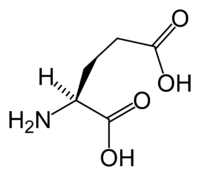
Photo from wikipedia
Rasmussen encephalitis (RE) is a severe pediatric inflammatory brain disease characterized by unilateral inflammation and atrophy of the cerebral cortex, drug‐resistant focal epilepsy and progressive neurological and cognitive deterioration. The… Click to show full abstract
Rasmussen encephalitis (RE) is a severe pediatric inflammatory brain disease characterized by unilateral inflammation and atrophy of the cerebral cortex, drug‐resistant focal epilepsy and progressive neurological and cognitive deterioration. The etiology and pathogenesis of RE remain unclear. Our previous results demonstrated that the adenosine A1 receptor (A1R) and the major adenosine‐removing enzyme adenosine kinase play an important role in the etiology of RE. Because the downstream pathways of inhibitory A1R signaling are modulated by stimulatory A2AR signaling, which by itself controls neuro‐inflammation, glial activation and glial glutamate homeostasis through interaction with glutamate transporter GLT‐1, we hypothesized that maladaptive changes in adenosine A2A receptor (A2AR) expression are associated with RE. We used immunohistochemistry and Western blot analysis to examine the expression of A2ARs, glutamate transporter‐I (GLT‐1) and the apoptotic marker Bcl‐2 in surgically resected cortical specimens from RE patients (n = 18) in comparison with control cortical tissue. In lesions of the RE specimen we found upregulation of A2ARs, downregulation of GLT‐1 and increased apoptosis of both neurons and astroglia. Double staining revealed colocalization of A2ARs and Bcl‐2 in RE lesions. These results suggest that maladaptive changes in A2AR expression are associated with a decrease in GLT‐I expression as a possible precipitator for apoptotic cell loss in RE. Because A2AR antagonists are already under clinical evaluation for Parkinson's disease, the A2AR might likewise be a tractable target for the treatment of RE.
Journal Title: Brain Pathology
Year Published: 2019
Link to full text (if available)
Share on Social Media: Sign Up to like & get
recommendations!